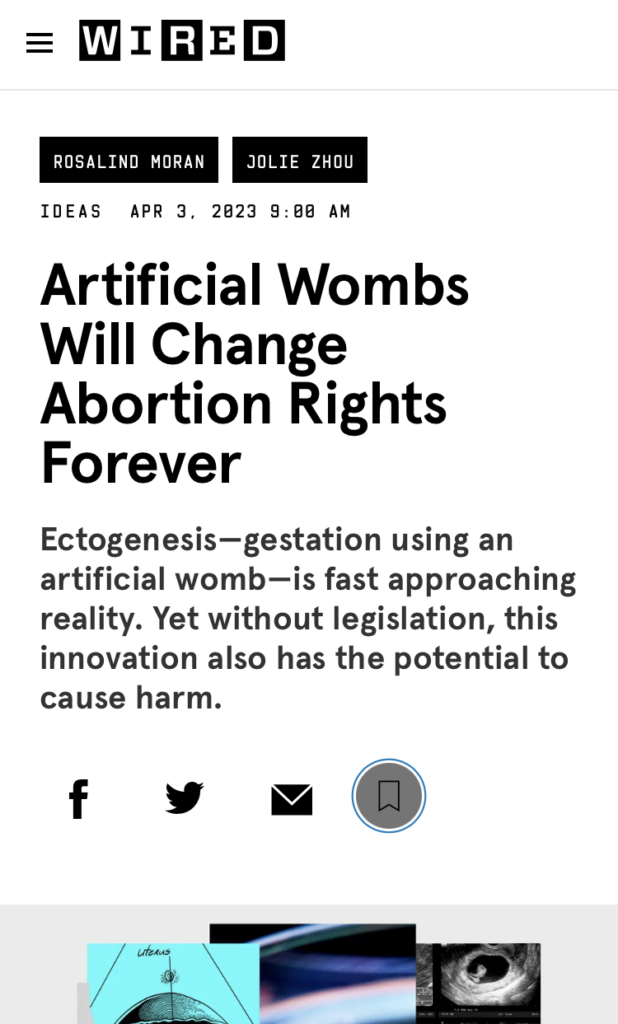“Ectogenesis—gestation using an artificial womb—is fast approaching reality. Yet without legislation, this innovation also has the potential to cause harm…”
This year has been a fun one for me so far in terms of expanding my interests and areas of knowledge. Since beginning work in a media role linked to a large European scientific research program, I have found myself even more drawn than before to questions surrounding science, technology, policy, and ethics. These have always been fields that have interested me; now, however, I get to think about them all the time. It’s exciting!
That said, writing about artifical wombs is not part of my day job. Rather, discussing artificial wombs, ethics, and women’s rights has been a key part of this year for me primarily because I often talk about these topics with my friend Jolie Zhou. Jolie is pursuing a PhD in History and Philosophy of Science at the University of Cambridge – she’s very bright! – and we realised we are both fascinated by reproductive ethics.
Consequently, we decided it might be fun to write about some of the topics that have occupied both our thoughts so much these past few months. Key among these topics is the development of artifical wombs and how this technology might impact abortion law.
We reached out to an editor at WIRED – the excellent Angela Chen – and were delighted to be commissioned to write an article for the publication.
If you would like to read the article, you can access it here: https://www.wired.com/story/ectogenesis-reproductive-health-abortion/
Having an article dealing with abortion law published has been an interesting experience. Writing about abortion for the internet is not typically an activity people recommend if one wishes to avoid drama and/or make friends!
However, I have been pleasantly surprised by the politeness of the people who have reached out to me about the article directly, even when they expressed strong anxieties over the development of artificial wombs.
Something interesting about seeing people’s responses to this article, too, is noticing how the vast majority seem to centre around the question of “artificial wombs: yay or nay?”. It’s an emerging technology that gives many people pause, and for good reason – as Jolie and I explored in our article, ectogenesis could have serious repercussions for current abortion law and women’s rights (and our article, being centred on abortion, explores but one aspect of ectogenesis’s risks!).
Equally, however, for all many people are squeamish at the notion of artificial wombs being made a tool in reproductive healthcare, with strong legislation accompanying it, this technology has the potential to offer benefits in certain ways. These include healthwise; in terms of gender parity; and also in highly specific situations such as, for example, ones wherein a “pro-life” individual wishes to terminate a pregnancy without aborting a foetus. In short, like most issues, artificial wombs and their applications are more complex than they might appear at first glance. They are neither all good nor all bad. They are also in development right now – so whatever one’s opinions regarding the technology and associated policies, these are topics worth talking about.
For those who read it: I hope you find something of interest in the article!
Have a good month ahead,
Rosalind
